June 26, 2025 | 07:50 GMT +7
June 26, 2025 | 07:50 GMT +7
Hotline: 0913.378.918
June 26, 2025 | 07:50 GMT +7
Hotline: 0913.378.918
It is the forest garden viewing to Da river, being backed by Tan mountain in Minh Quang commune in Ba Vi district, Hanoi owned by Ms.Dinh Thi Song Nga, head of the Thien Luong Oriental Medicine Clinic. The once bare hill has been covered with several fruiters, herbal plants with an unexpected rapid growth pace after just 13 months.
The bond with clean agriculture of Ms. Nga originated from the disappointment on the quality of agricultural products that she had used. Even the organic ones without natural enemies and completely dependent on biological plant protection agents are still unsure. As a result, she hired half of a garden in Trac Van commune (Duy Tien district, Ha Nam) to plant organic by herself.
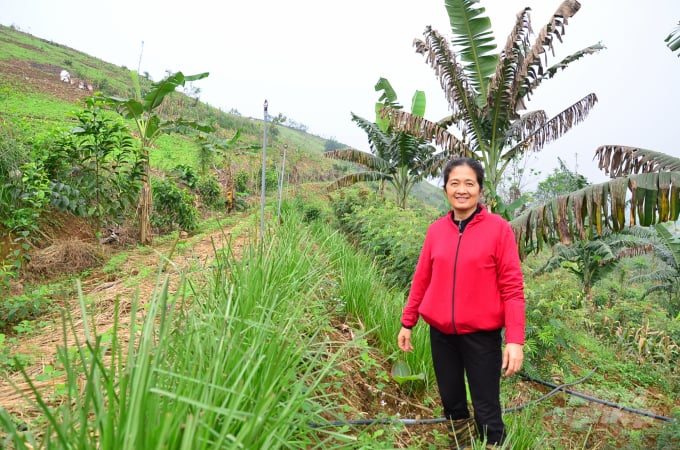
Ms. Dinh Thi Song Nga in a corner of the garden. Photo: Duong Dinh Tuong.
By actual observation, she listed which types of vegetables are in need or no need of protection agents. She chose to plant vegetables in the most natural way possible and not even removed bugs from the veggies. Her first two crops were failed but the following crops produced tasty products even the looking was not good.
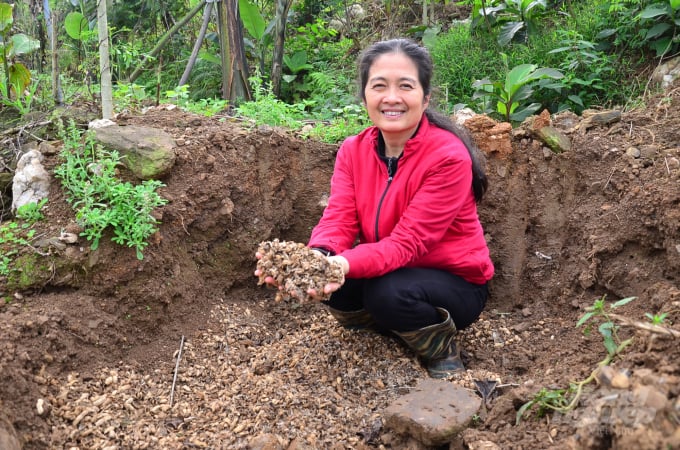
Ms. Dinh Thi Song Nga composts organic fertilizer. Photo: Duong Dinh Tuong.
She moved to Hanoi then to hire a garden in Phu Thuong commune, Tay Ho district to pursue vegetable cultivation. However, when the soil was taken care of and got better, the owner claimed back the land, flattening everything, and sprayed pesticides following old farming techniques.
Not until one month later did Ms. Nga find another land to follow her intention of establishing a forest garden model, which is believed to produce the best agricultural products and most environment-friendly.
“The model helps retain water and not to cause natural disaster and floods. It also creates favorable conditions for biodiversity and disease control. While monoculture still requires pesticides or event biological pesticides,” Ms. Nga explained.
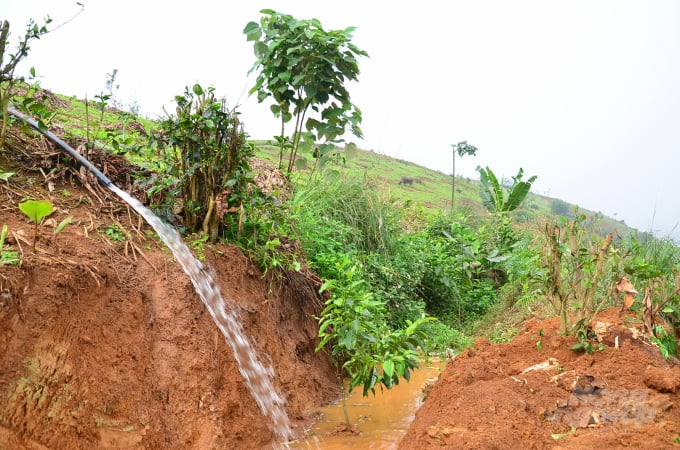
The stream water leads to the garden. Photo: Duong Dinh Tuong.
Although there are several schools and training courses on forest gardens globally, it is a brand new thing in Vietnam, thus Nga had to refer to some non-governmental organizations and got to know Greenhub by chance. She got help from Mr. Duong Tuan, who provided her a free design if Greenhub was allowed to use the picture of her forest garden for training.
One week later, a complete design was shown including the internal traffic, contour ditches to retain water; plant structure; a combination of plant and livestock production. She was also instructed with which types of plants to grow for the initial years and following years.
There are many ways to protect plants including using chemical pesticides, biological pesticides, or just natural balance, which Nga believes to boast the highest level of cost-saving and sustainability without working hard.
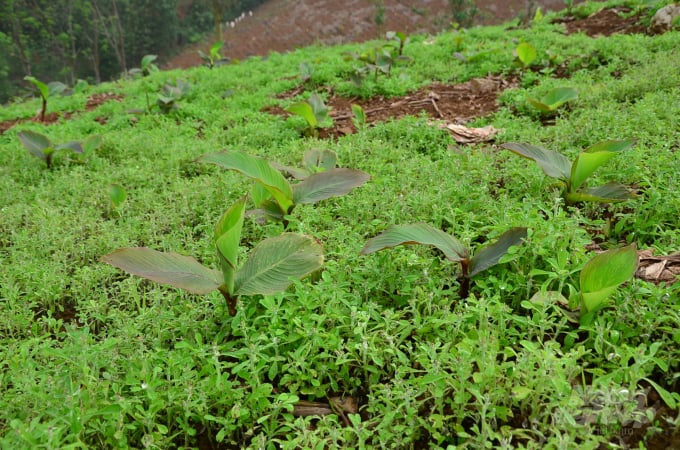
The lush green forest garden. Photo: Duong Dinh Tuong.
She told: “The garden is home to 250 plant species but I do not separate the herbal plants and the edible ones. I just categorize the plants into the perennials, short-term plants; pile roots, and bunch roots among others."
The forest garden serves the demands of herbal medicines for the clinic as well as providing vegetables and foods for customers.
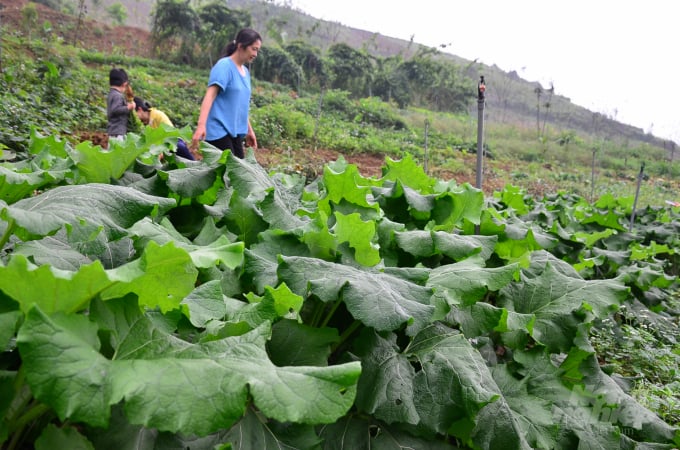
The herb beds are green. Photo: Duong Dinh Tuong.
I want my garden to be disease-controlled with biodiversity, with lots of birds, snakes, mice, toads, frogs, frogs, bees, dragonflies, mantises… so that I seek ways to create a favorable environment for their living according to the law of nature.
At the beginning of planting, the cauliflower and cabbage in the forest garden attracted a lot of worms, the workers want to remove them by spraying neem oil (a natural oil, to treat insects) but I disagreed. Some days later, flowerpecker flocked to catch the worms. The canopy layers in the forest garden have many effects, the flowerpecker nest on pomelo trees, papaya trees, and canola trees.
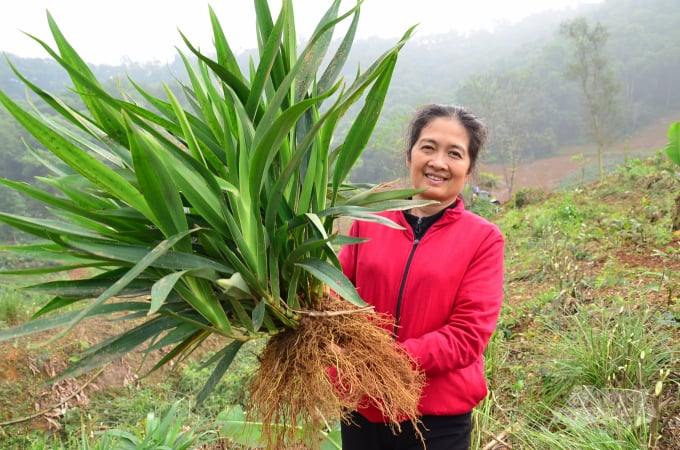
Ms. Dinh Thi Song Nga examines the roots of a tree. Photo: Duong Dinh Tuong.
In addition, I trial an insect hotel with logs below and some waste bricks play as a roof to cover the rain and sun. Insects love to nest there. There are also a lot of natural shelters for insects in my garden."
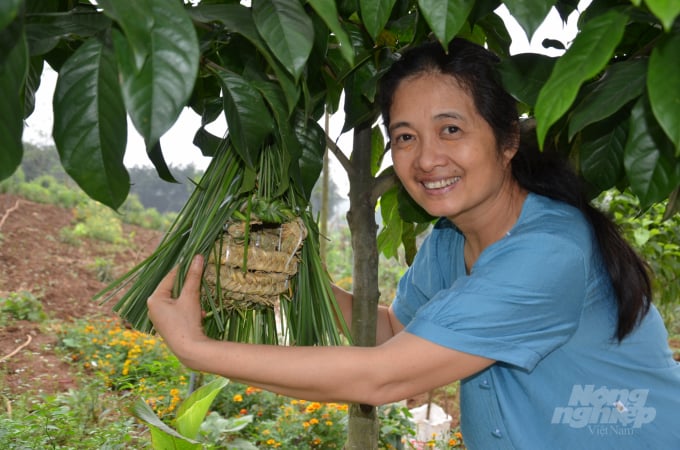
Nest for birds. Photo: Duong Dinh Tuong.
“My prime principle is creating conditions for the whole species to live together, regardless of natural enemies or insects since sometimes they are beneficial and sometimes harmful. Mantis usually eats worms and bugs but they can even chew each other when starving. When nature is balanced, species control each other.

Insect hotel. Photo: Duong Dinh Tuong.
If you want to gain money, you have attached to two thresholds: the threshold of natural enemies and the threshold of pests. If you feel that it is too many worms for the natural enemies to kill, causing harm to the garden, you must promote the natural enemies by breeding. If there are too many natural enemies and no worms, they will eat each other or starve to die or run away,” she confided.
At the start, besides buying bat manure to improve the soil, she used the very plants in the garden to fertilize, potassium is abundant in bananas, wild sunflowers, macronutrients are sufficient in moringa, phosphorus is abundant in sugarcane, guise leaves, protein is abundant in legumes. All it takes is simply cutting, mulching the roots, beds, and then burying the soil, irrigating water from streams in the forest, which features many indigenous microorganisms.
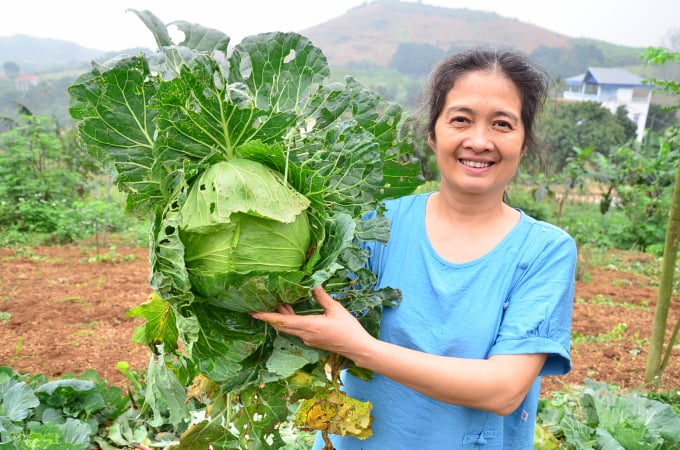
Cabbage plants from the forest garden. Photo: Duong Dinh Tuong.
Rather than compressing the land for profit, she intercropped and cycled legumes into the soil to enhance it. Allow plants to develop normally, with sufficient days and months instead of forcing them. The soil should not be seeded rapidly, but rather spread out to allow for adequate photosynthesis and resistance. Don't over-water that can wash away the nutrients, but cover instead. All conditions must be created for microorganisms in the soil to grow.
She does not overexploit the propagule due to bunch roots but seed-based plants create tap-root, which strikes deeply into the soil to absorb nutrients to nurture the plant body and leaves. The contour ditch also helps prevent the water to flow away.
Additionally, tap-root plants such as vetiver grass aid in the deeper penetration of water; when the grass competes for photosynthesis with the main crop, it is cut with the roots remaining, since grassroots store water and assist to keep the garden moist. As a result, the groundwater level was elevated substantially.
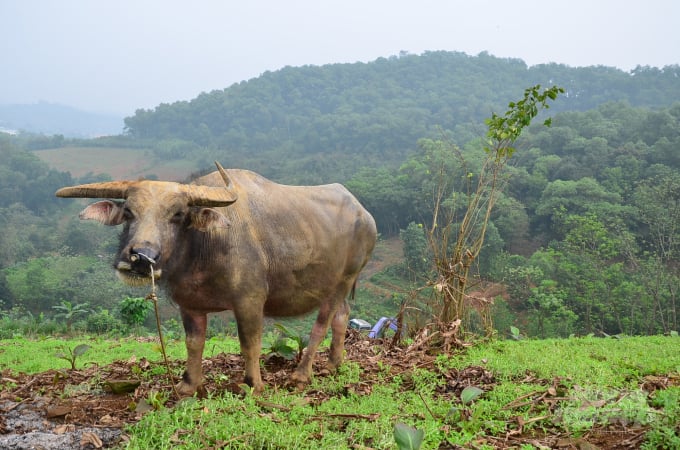
The beauty of the forest garden. Photo: Duong Dinh Tuong.
She estimated that while the first year of planting forest gardens would be a loss, the second year would be feasible to pay salary for her workers (8 people) due to veggies, flowers, and purchases of natural items from farmers. The next year, she will be able to pay for machine shopping, and in the fourth year, she will profit from hundreds of guava, apple, orange, cassava, and chrysanthemum trees... The primary benefit of a forest garden is nutritious food, medicinal properties; also, it generates clean air, soil, and water, aids in flood protection and mitigates climate change.
Translated by Linh Linh
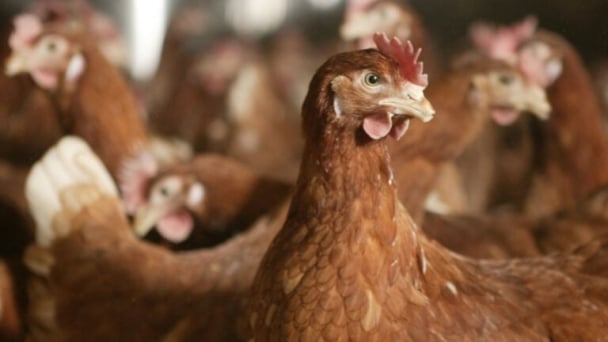
(VAN) Research has shown that Hy-Line brown hens may be better suited for cage-free production based on overall greater egg production and other quality metrics.
![Turning wind and rain into action: [9] Digitizing hydrometeorological data in response to climate change](https://t.ex-cdn.com/nongnghiepmoitruong.vn/608w/files/news/2025/06/17/z6704423696987_15fd32ffc26d590d204d520c9dac6786-nongnghiep-165943.jpg)
(VAN) Farmers have begun accessing hydrometeorological applications to adjust their cropping schedules, aiming to ensure productivity and adapt to climate change.
![Turning wind and rain into action: [8] Real-time salinity detection and early warning technology](https://t.ex-cdn.com/nongnghiepmoitruong.vn/608w/files/news/2025/06/17/z6704423696987_15fd32ffc26d590d204d520c9dac6786-nongnghiep-151127.jpg)
(VAN) Thanks to the integration of modern hydrological-hydraulic models, remote sensing technologies, and artificial intelligence, the accuracy of hydrological forecasting has significantly improved.
![Turning wind and rain into action: [7] Early disaster warnings help marine farmers minimize losses](https://t.ex-cdn.com/nongnghiepmoitruong.vn/608w/files/news/2025/06/17/z6704423696987_15fd32ffc26d590d204d520c9dac6786-nongnghiep-142942.jpg)
(VAN) In recent years, thanks to early disaster warnings and forecasting, marine farmers in Khanh Hoa province have been able to reduce risks and losses, thereby improving production efficiency.
![Turning wind and rain into action: [6] ‘Four on-the-spot’ disaster management software](https://t.ex-cdn.com/nongnghiepmoitruong.vn/608w/files/news/2025/06/17/e5a48259d6a262fc3bb3-nongnghiep-183800.jpg)
(VAN) By simply activating the scenario on the disaster management software, the relevant authorities immediately know how many households need to be evacuated, where to evacuate them to, and by what means of transportation…
![Turning wind and rain into action: [5] Hue applies modern technology in disaster forecasting](https://t.ex-cdn.com/nongnghiepmoitruong.vn/608w/files/news/2025/06/17/z6704423696987_15fd32ffc26d590d204d520c9dac6786-nongnghiep-093938.jpg)
(VAN) In Hue city, modern technology has recently been applied in meteorological and hydrological forecasting and warning, helping to reduce the damage caused by natural disasters.

(VAN) A cutting-edge farming technique being implemented on an experimental ranch in Arizona's Sonoran Desert has already saved a billion gallons of water over five years, according to Civil Eats.